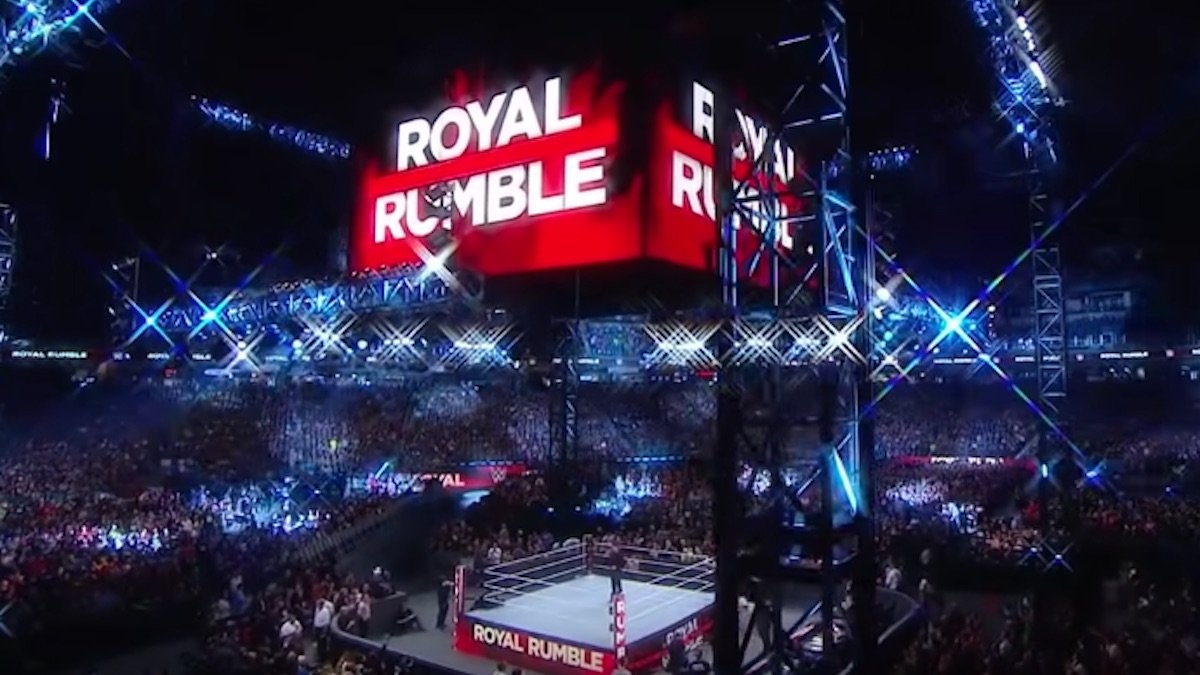Welcome to the fascinating world lurking beneath the grand surfaces of our beloved arenas! If you’ve ever watched a thrilling game or concert, you may have noticed the excitement that electrifies the air. Yet, hidden just below that lively scene, there lies a story of its own—an underground realm teeming with history, mystery, and function. Let's peel back the layers and explore what really goes on beneath the arena floor.
Historical Significance of Underground Spaces

Underground spaces have long captured our imaginations, offering a glimpse into the past and a peek into the unseen mechanisms that make our events possible today. The areas beneath arenas often serve multiple purposes, rooted deeply in history.
Historically, these spaces were engineered for:
- Storage: Many arenas housed equipment, props, and costumes for performances and events. These storerooms were vital for logistical organization.
- Utility Operations: The hidden labyrinths often contained electrical systems, hydraulic lifts for stage equipment, and climate control to keep audiences comfortable.
- Safety Protocols: Underground passages served as emergency exits or access points for first responders during unexpected incidents.
Beyond their kickass practical uses, these spaces contribute to the aura of arenas. Imagine the stories those walls could tell about the games, concerts, and events that have unfolded above! It’s believed that ancient arenas, like the Roman Colosseum, had a complex system of underground chambers which not only supported event logistics but also heightened the dramatic flair of gladiatorial combat.
Today, arenas still honor this subterranean legacy, balancing modern advancements while preserving historical significance. They remind us of our connection to the past and the engineering marvels that continue to support our entertainment experiences. So next time you’re cheered away in the stands, just remember: there’s a whole different world alive and thriving below you!
The Structure and Function of the Arena Floor

The arena floor is often perceived as just a flat surface where the action takes place, but there's so much more happening beneath your feet! It serves as a crucial component in various types of arenas, including sports stadiums and concert venues. Let’s dive a little deeper into its structure and function.
Generally, the arena floor can be broken down into several layers:
- Top Layer: This is the actual surface that the audience sees and interacts with. Depending on the sport or event, this can be made of hardwood, artificial turf, or even ice!
- Substrate: Under the top layer lies a substrate that provides support and shock absorption. This layer often consists of a combination of sand, crushed stone, and rubber.
- Support Structure: The support structure is usually made of concrete or steel beams to ensure that the arena can withstand heavy loads during events.
- Drainage System: Proper drainage is key! There are intricate systems in place to handle moisture, especially in places where ice or water is used.
Each layer plays a pivotal role in ensuring the safety and functionality of the arena. It needs to be sturdy enough to handle everything from the energetic stomping of fans to the heavy equipment used by event organizers. In some cases, the arena floor is designed to be multifunctional, allowing for a variety of events, which adds even more complexity to its structure!
What Lies Beneath: The Secrets of the Subsurface

Now that we've covered the structural aspects, let’s peek beneath the arena floor to uncover some of the secrets hidden below the surface. You might be surprised at what you find!
The subsurface area of an arena can be a maze of hidden features and utilities, including:
- Utility Lines: A web of electrical, water, and gas lines crisscrosses beneath, ensuring that everything from lighting to concession stands operates smoothly.
- Storage Space: Many arenas utilize their subsurface for storage, housing everything from equipment for events to promotional materials.
- Ventilation and Climate Control: Adequate airflow is vital in an arena. Systems are often hidden below the surface to regulate temperature, especially for ice rinks and high-energy events.
- Access Tunnels: These are crucial for moving staff, performers, and equipment without disrupting the audience’s experience. They provide backstage access for quick changes and emergency exits.
Understanding what lies underneath the arena floor adds an entirely new layer of appreciation for the events that unfold above. The engineering and planning that go into arenas are nothing short of fascinating, ensuring a seamless experience for fans and participants alike! So, next time you step into an arena, remember that there’s a bustling world below, working tirelessly to support the excitement above.
Modern Technology and Its Impact on Arena Design
When we think about modern arenas, we often picture grandiose structures filled with cheering fans, vibrant lights, and pulse-pounding excitement. However, what’s happening beneath the surface? The arena floor has evolved from a simple wooden stage to a complex labyrinth of technology and design, all thanks to modern advancements.
Today, architects and engineers are harnessing cutting-edge technologies to create multi-functional spaces that serve various purposes. Not only do these advancements improve audience experiences, but they also ensure the safety and efficiency of operations. Here are some key innovations:
- Smart Technology: Many arenas now incorporate smart technology, including IoT devices, to monitor crowd behavior, enhance security, and improve overall guest experience.
- Flexible Design: Movable components such as retractable seating and modular sections allow venues to easily switch between different types of events, from concerts to sports.
- Improved Ventilation: Advanced HVAC systems ensure optimal air quality, which is particularly important during packed events.
- Sustainable Features: Eco-friendly technologies, such as solar panels and rainwater harvesting systems, are becoming increasingly important in modern arena design.
- Virtual Reality Enhancements: Arenas are beginning to invest in VR experiences that allow fans to feel more immersed, even before the event begins.
In conclusion, the impact of modern technology on arena design dramatically transforms our entertainment experiences. As technology continues to evolve, it’s exciting to think about what the future holds beneath the arena floor!
Case Studies: Famous Arenas and Their Underground Features
Let’s dive deeper into some iconic arenas to see how they’ve integrated their underground features into overall design and functionality. These case studies shed light on how effective underground infrastructure can elevate user experiences and operational capabilities.
| Arena | Location | Underground Feature |
|---|---|---|
| Madison Square Garden | New York City, USA | Home to a multi-level loading dock that allows for seamless event setup and tear-down. |
| Wimbledon Centre Court | London, UK | Features an underground irrigation system that efficiently distributes water to the grass courts. |
| Copenhagen's Royal Arena | Copenhagen, Denmark | Includes a state-of-the-art climate control system located below the seating to enhance audience comfort. |
| Los Angeles Memorial Coliseum | Los Angeles, USA | Has extensive historical tunnels that not only serve as pathways for athletes but also house important maintenance equipment. |
| Tokyo Dome | Tokyo, Japan | Houses an innovative transceiver system beneath the floor, allowing for instant communication during events. |
These examples illustrate how the underground aspects of arenas play a crucial role not just in function, but also in enhancing the overall experience for fans, players, and event organizers. As we continue to explore the exciting world beneath the arena floor, it's clear that innovation is key to creating venues that are more than just spaces for entertainment—they're complex ecosystems that cater to our needs in unexpected ways.
A Rumble Under the Arena Floor - What’s Happening Below the Surface
As spectators gather to witness thrilling events, few realize that beneath the towering arena structure lies a labyrinth of activity and engineering marvels. The space below the arena floor is not just a void; it's a bustling hub filled with technology, maintenance facilities, and historical remnants. Understanding what lies beneath adds a new dimension to the arena experience.
The arena sub-level often includes:
- Dressing Rooms: Where performers prepare for their time in the spotlight.
- Utilities and Equipment: Essential systems such as electricity, plumbing, and HVAC that ensure the venue runs smoothly.
- Storage Areas: Facilities to house props, costumes, and other materials needed for events.
- Loading Docks: Crucial for the seamless transition of equipment and supplies in and out of the arena.
- Emergency Services: Access points for medical personnel and safety equipment, ensuring the well-being of all attendees.
Moreover, some arenas feature intriguing historical layers beneath their floors. For instance, the famous Colosseum in Rome has sophisticated tunnels and chambers that were once used for housing gladiators and animals. These historical aspects provide a glimpse into the past and enhance the cultural significance of modern arenas.
Innovative technology is also making its impact felt below the surface. Smart sensors and monitoring systems provide real-time data crucial for maintenance and safety, ensuring an unforgettable experience for spectators while maximizing operational efficiency.
In conclusion, the future of arena design and exploration is set to be a fusion of cutting-edge technology and a reverence for history. As we continue to innovate and uncover what lies beneath, the potential for enhanced entertainment experiences grows exponentially.
 admin
admin








